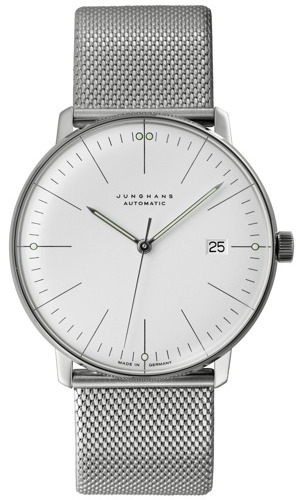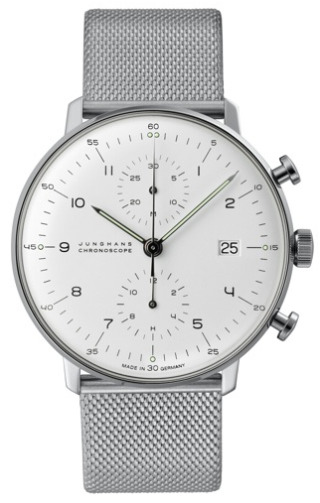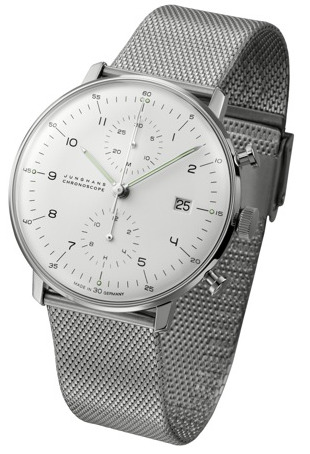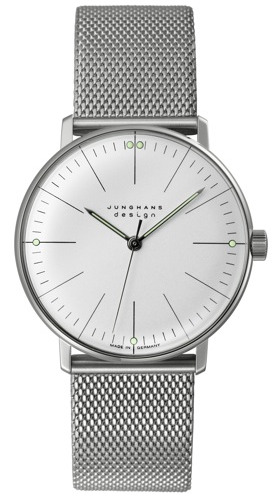
The “Max Bill watch” as it is known is one of the 20th Century’s most famous watch designs. Clearly conceived by designer and architect Max Bill in Switzerland, the watch was a staple of goodness back when it was originally made in the 1960s. Since then you could buy versions of the watch in its pure form as made by German Junghans (who has many of their movements made by Seiko). For 2010 Junghans offers up a more modern, but still retro version of this retro classic. There are three versions of the watches and most exciting is their more modern dimensions (save for the still small manually wound version).
The Max Bill watch is what you can call “concrete Bauhaus.” I think this term neatly applies to the combo of Bauhaus design with a modern touch that evokes the beginnings of modern architecture from the 1950s and 1960s. Many of these architectural designs that I refer to may look a bit dated by today’s standards, but the best pieces from this era both structures and items (like this watch) have a great contemporary relevance. The Max Bill watch was so good because of how functional it was, but still stylish. Undeniably easy to read, attractive, and soothing to the eye. The design did miraculous things with space and felt like something you wanted to wear.
For 2010 Junghans is going to release three new models of the classic Max Bill watch. A manually wound version, an automatic, and a chronograph (called the Chronoscope). One thing that I am not sure about is the movements actually used. Each mechanical of course, but not sure who makes them – possibly ETA. The cases are in steel and the watch is attached to a mesh metal bracelet with a folding clasp. There is SuperLumiNova on the hands and some of the major hour markers as well.


Uniquely used for the watches, and in retro fashion is the crystal. It is a very special type of Plexi-Glass. The idea is to look like the acrylic crystals of the past. It is domed, and specially treated to be quite hard and more scratch resistant that similar crystals. It also has a highly increased resistant to UV rays and chemicals, plus in to increase the “depth of shine” (not totally sure what that means).
Headlining the collection is the new automatic model (with date). Not huge, but larger than classic standards are 38mmm wide. A very satisfying look with a nice modern feel and of course totally Max Bill. Then you have a slightly larger “Chronoscope” model at 40mm wide. This 12 hour chronograph (likely using a Valjoux 7750 movement or similar) dispenses with the seconds hand for a bi-compax look. The Chronoscope is also the most “instrument like” of the trio with full Arabic hour and minute numerals. This is really a beautiful model.

The smallest version will be just 34mm wide and will contain the manually wound movement. It is a shrunken version of the Automatic mostly, with the date function removed.
Prices for the watches aren’t too bad. Made in German, the Max Bill by Junghans watches for 2010 will retail for 1,320 euros for the Chronoscope, 705 euros for the Automatic, and 515 euros for the Manually Wound version. Look for them soon.
See Junghans watches on eBay here.